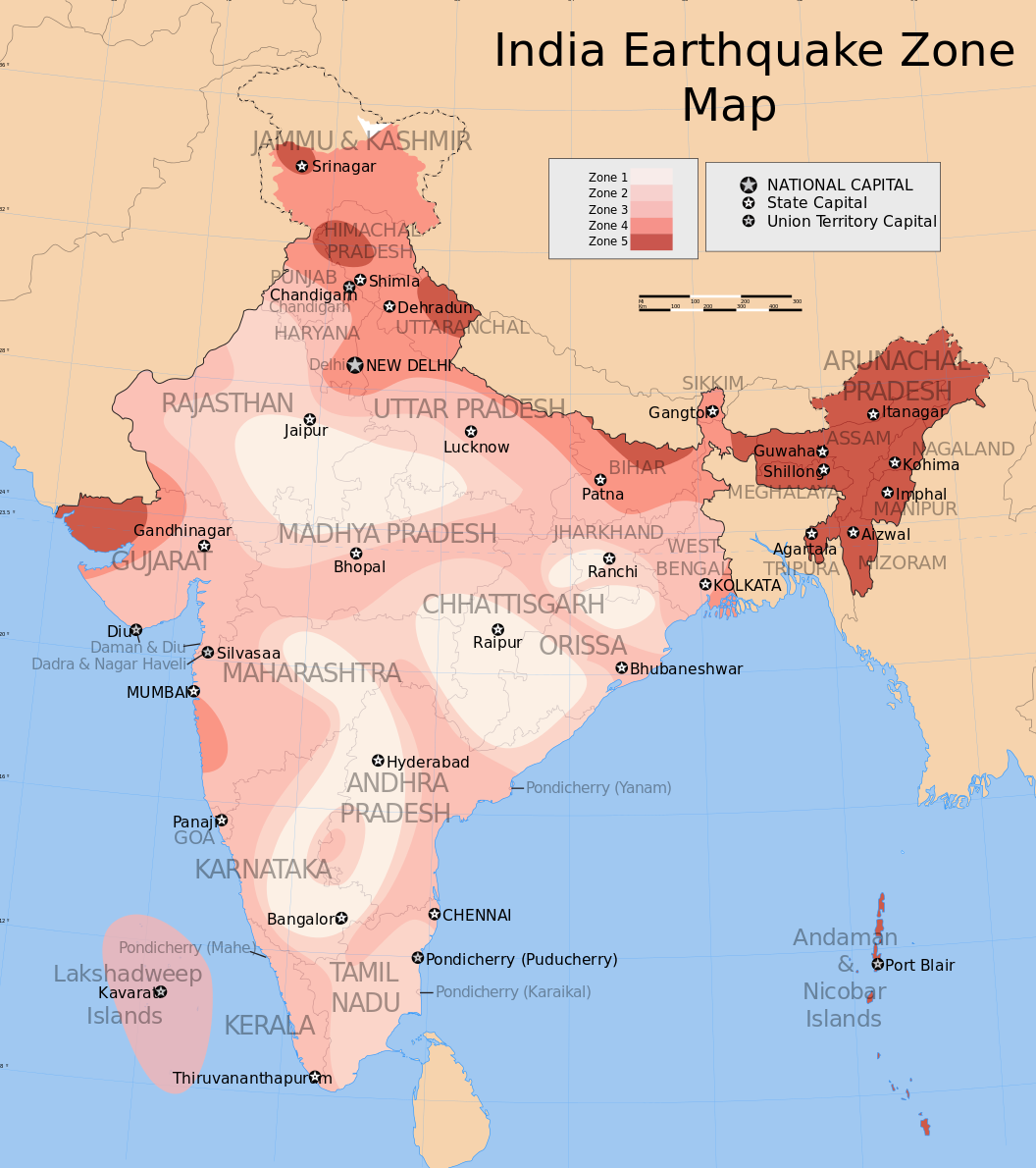India
Earthquake Zones in India

A movement of the ground surface caused due to the unexpected release of energy by the earth’s crust is known as Earthquake. Its impact is sudden, but the process may have taken days or years to clear. Also, it ranges from small unnoticeable shaking to destructive movement.
Causes of Earthquake:
- Due to the disequilibrium in the earth’s crust.
- Natural causes like folding and faulting, Volcanism, Plate tectonic.
- Anthropogenic causes like dams and multipurpose river valley project, Dynamic and other nuclear tests.
Folding and faulting:
- Buckling of the earth’s crust.
- The movements of the earth’s crust along with the cracks or faults.
- It causes disequilibrium in the lithosphere which eventually causes an earthquake.

Volcanism:
- A volcanic matter like lava, gases, ash which exert huge pressure on the overlying layers of the crust.
- Earthquake-prone zones are closely related to the Pacific ‘Ring of Fire’ which is a highly volcanic active region.
Advertisement
Tectonic Plates:
- According to Plate Tectonics, the earth’s crust is not a constant solid mass, but it divides into the many ‘plates’ which ‘floats’ on a semi-liquid layer called Asthenosphere.
- This layer collides with other plates and as a result, energy gets a release.
- This energy is seen on the earthquake surface.
- It is the most widely and scientifically accepted theory that relates to the phenomenon of the earthquake.
Anthropogenic Factors:
Hydroelectric power projects involve the creation of a large water lake behind the dam. The huge amount of water stored applies pressure on the underlying surface rocks. On the basis of the design of the surface rocks, it leads to isostatic disequilibrium. Similar to deep seafloor drilling, nuclear testing, dynamite blasting causes the disequilibrium.

Tools for measuring Earthquakes:
- The Mercalli Scale is based on intensity, less scientific, the value depends on the cultural landscape, for inspection of people.
- Richter scale is based on the amplitude of the largest wave recorded, limited use in case of large magnitude earthquake, logarithmic scale (mag 6 earthquake is 10 times more severe than mag 5 EQ).
- Moment Magnitude Scale is based on the total moment release of an earthquake, bring over the Richter scale when the liability is a large, wide range of earthquake size, moment = (distance traveled by fault)*(force required).
World Distribution of Earthquake:
- It is a global phenomenon.
- Some places are more prone to the phenomenon of an earthquake than others.
- On a global scale, Distribution in three subtitles:
- Circus Pacific Belt
- Trans Eurasian Belt
- Mid-oceanic Ridge



